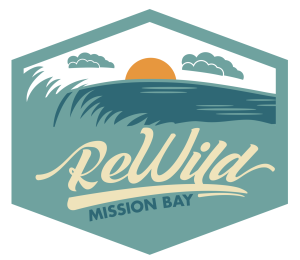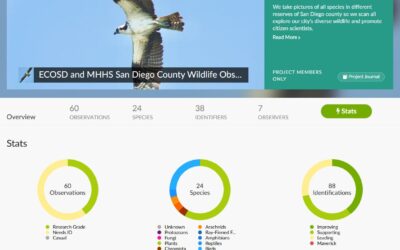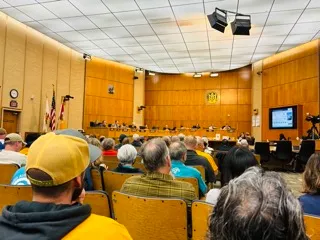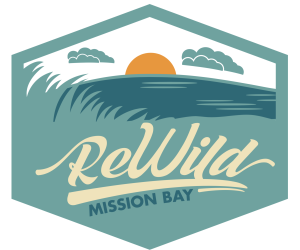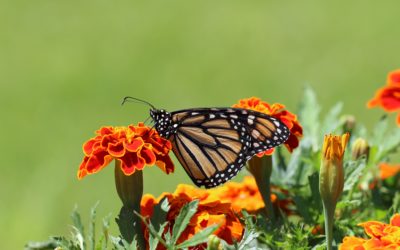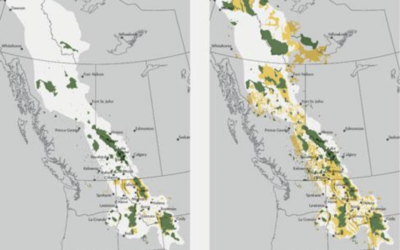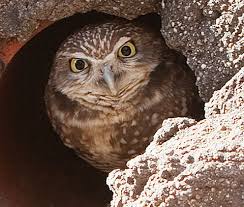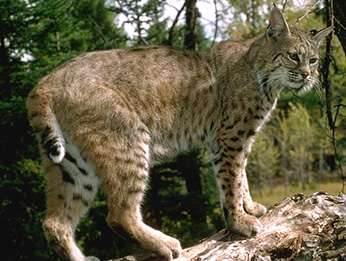Re-Wild Mission Bay Program
A project of the San Diego Audubon Society and the ReWild Coalition of 75 community partners, ReWild Mission Bay seeks to enhance and restore the natural wetlands in the northeast corner of Mission Bay.
We’re working to ensure cleaner water, greater climate resiliency, increased carbon sequestration, and improved public access along our shared bayfront.
The only place in Mission Bay, with all the elements needed to restore and maintain a salt marsh habitat is in the northeast corner of the bay. Because of this, the 1992 Master Plan designates the north east corner of the bay as natural open space and calls for salt marsh restoration where it will benefit from continuity with and proximity to Rose Creek, the only constant source of fresh water in the bay. In light of this, the U.S. Fish and Wildlife Service granted almost half a million dollars to San Diego Audubon Society to study the feasibility of salt marsh restoration in this area. This comprehensive study shows among other things, how cost effective the restoration of salt marsh is as opposed to hardening the shoreline against sea level rise. The community has rallied around this study and the resulting plan. (option 3, the wildest) and formed the ReWild Coalition, including state and federal agencies, educational institutions, non-profit and civic organizations as well as many interested members of the public. The Environmental Center of San Diego is proud to be an active member of this coalition. We urge you to learn more and to get involved.



De Anza Cove
The tidelands around Mission bay were deeded to the City by the State Lands Commission in 1948 “for the use and enjoyment of all the citizens of California. By 1955 De Anza Cove had been dredged and filled to produce the artificial construction that they named De Anza Point, otherwise known as the boot. The original intent for De Anza Point was for it to be a vacation style resort and trailer park. It soon , however morphed into a gated residential community. The State Lands Commission stepped in, in 1960, ruling that this was an illegal use. Laws passed in the interim had made it harder to close residential trailer parks. The result was State legislation, known as the Kapiloff bill, which allowed residents to stay until the original 50 year lease ran out. Ten years later the lawsuits are still being litigated, but most of the residents are gone. We believe that the complete removal of the boot is essential to restoring tidal flows and to improve water quality in the whole North East corner of Mission Bay.
Mission Bay Golf Course
This parcel was included in the City’s “special study area” but is on Pueblo Lands which are fully owned by the City. The golf course was opened in 1955 as a nine hole course. When it was rebuilt as an eighteen hole course in the early sixties, the fences went up. While these fences are said to be for the safety of the public, they also isolate the surrounding community from it’s own bay front and park. Some of these fences are twenty feet high and combined with golf course landscaping, not only access is blocked, but even the view of the bay is blocked off from the surrounding community. We believe that Golf is not coastal dependent and the course could be moved anywhere to improve ingress and egress to the Park, improve the view, and to make room for sea level rise.
Rose Creek
Rose Creek is the largest source of fresh water to Mission Bay. Rose Creek and it’s tributaries drain San Clemente Canyon and Rose Canyon all the way to Miramar and including the Miramar Land Fill. It is the only year round fresh water source to Mission Bay. The land surrounding the Creek is a mix of commercial, dedicated park land and City owned land. We are working with the State Lands Commission and the Friends of Rose creek to determine the status of these City owned lands and to settle issues of jurisdiction and responsibility.We believe that the complete removal of the artificial construction known as “the boot”, is integral to plans to restore the mouth of Rose Creek and to build a wetland habitat to filter the water coming from The Creek.
Campland
In the nineteen fifties, this area was the site of a sewage treatment plant, which was moved to Fiesta Island and then to Miramar. The land was leased in 1967, to Campland, who hauled in thousands of yards of construction waste and filled in the Bayfront to build a private resort, complete with private marina and beach. This operation is still in business today. In the last update of the Mission Bay Master Plan this area was dedicated to the expansion of the only remaining salt marsh in Mission Bay, the Kendall Frost reserve and the Northern Wildlife Reserve, which are directly adjacent. Plans for the restoration have not yet been provided by the City But they do plan to put Campland next to De Anza Cove.
We believe that any RV facility should be placed at the South Shores where there is direct access to two freeways, right next to Sea World. We also believe any concession on public property should be subject to competitive bidding and open to public review.
Kendall Frost Reserve and the Northern Wildlife Reserve
The Kendall Frost Reserve is 21 acres and together with the northern Wildlife reserve protect 40 acres of the only emergent wetlands (mud flats and marsh) left in Mission Bay. When the adjacent land now occupied by Campland is restored to marsh and upland habitats, as designated in the Mission Bay Park Master Plan Update of 1994, this will be less than 3% of the original marshlands in Mission Bay. The Mission Bay Park Master Plan Update clearly designates the North East corner of the Bay as the focus of efforts to restore marsh lands to improve water Quality and create open space for passive enjoyment. We believe that more habitat needs to be restored and De Anza Cove is the only place to do it. The whole area needs to work together as a natural system if it is to provide bioremediation and filtration of pollutants reaching the bay.
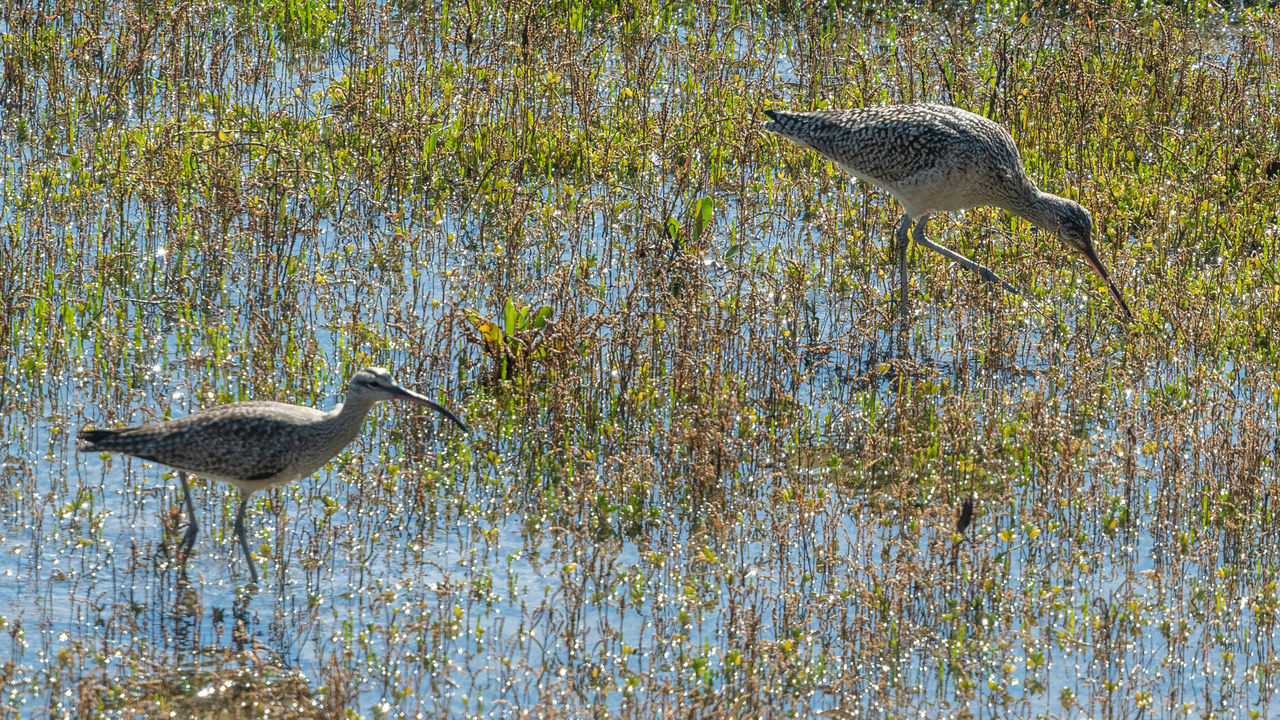
In review:
- We believe the Golf Course and RV facility are not coastal dependent uses and should be moved to make way for sea level rise
- We believe the removal of the boot is essential for water quality, restoration of the view and to connect Rose Creek to the marshlands.
- We believe the creation and restoration of open space and natural habitat will enhance the passive enjoyment of Mission Bay and provide a buffer against sea level rise.
- We believe the City should work with the relevant State and Federal agencies and with the Audubon Society instead of the moneyed interests that are seeking to profit from our natural resources.
This Project’s Latest Posts, News & Upcoming Events
Mission Hills High School Nature Club Collaboration
The Environmental Center of San Diego recently did a collaboration with the Mission Hills High School Nature Club to do some community service hours.
ReWild Planning Commission Update Dec2023
On December 7, 2023, ReWild attended the Planning Commission Committee to advocate for improvements to the ReWild area. The meeting, lasting nearly 6 hours, ended with unanimous support from the Planning Commissioners for the City’s De Anza Natural Plan.
Support the Efforts of the ReWild Mission Bay Coalition And Let Your Voice Be Heard
San Diegans can get involved now and help guide the development of one of the region’s most iconic landscapes – Mission Bay. The California Environmental Quality Act (CEQA) gives the public the opportunity to be part of the planning process for projects that can impact the environment.
San Diego-based Environmental Groups to Support: Environmental Groups in San Diego to Support Today
The Environmental Center of San Diego is working to protect the environment alongside dozens of other wonderful San Diego-based environmental groups. These organizations are working on a variety of important environmental issues, from protecting native birds to...
Rewilding: What is it & How Does it Work?
Written by Connor Yanz Optimism may feel difficult for today's environmentalist. Amidst the constant news of a warming climate and loss of biodiversity, anyone concerned about our environment can feel like they’re fighting a losing battle. Everywhere we look, hope...
Unanimous Vote by Regional Water Quality Control Board in Support of SEP Proposal
Following two hours of supportive public testimony, the San Diego Regional Water Quality Control Board voted unanimously 6-0 in favor of a Supplemental Environmental Project (SEP)
Our Other Projects
The opportunity to directly experience our beautiful natural resources is an important part of being a San Diegan and a present or future steward of those resources. That is why the Environmental Center of San Diego is committed to supporting appropriate public environmental programs.
Click on each project to learn more.
Give Today
Founder
Student
Family
Get In Touch
Phone:
805-835-1833
Email:
contactecosd@gmail.com

